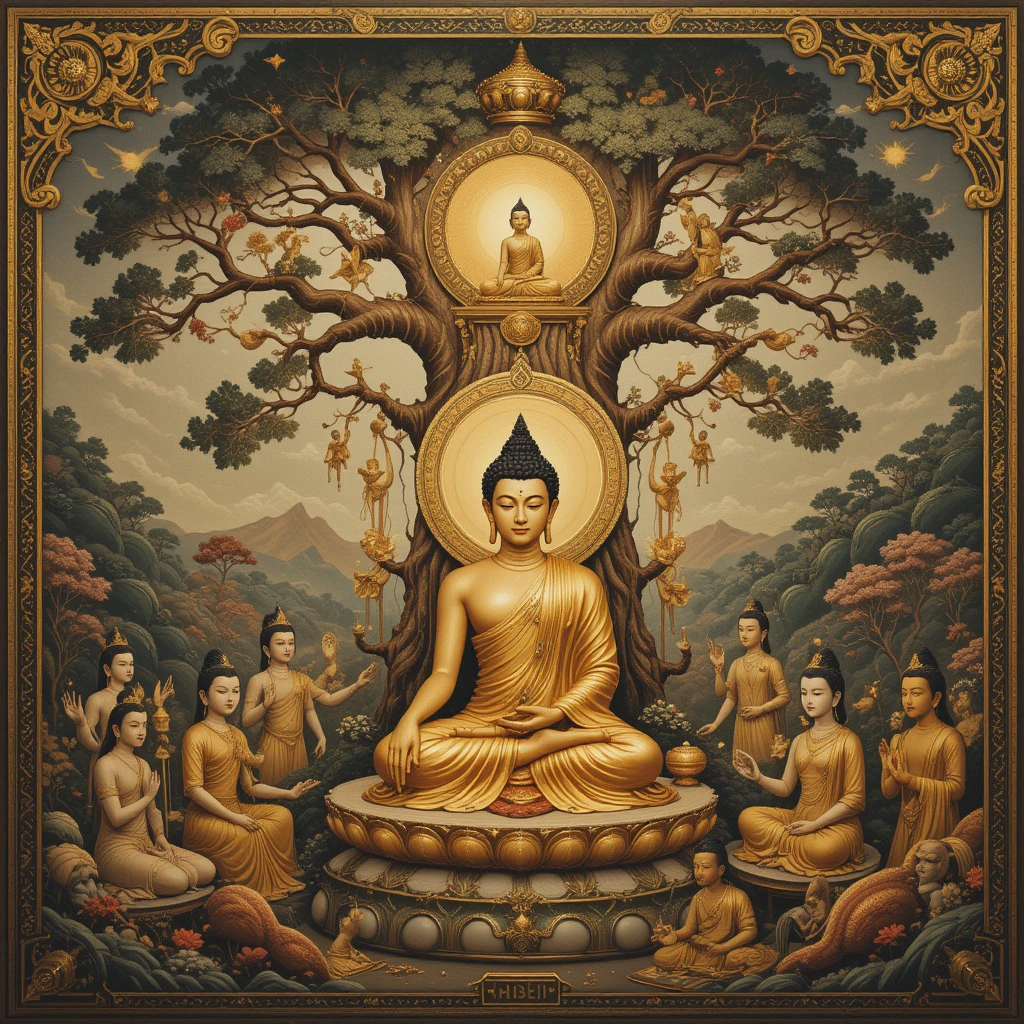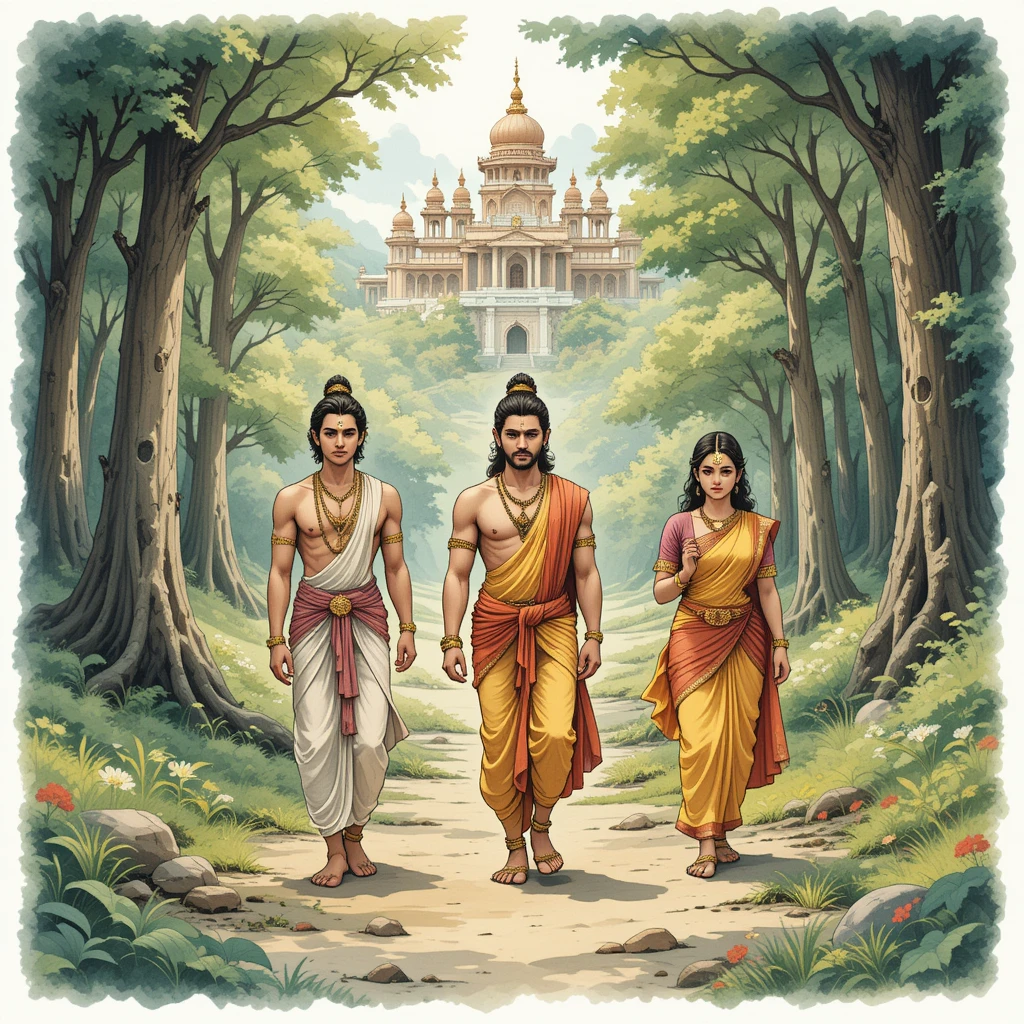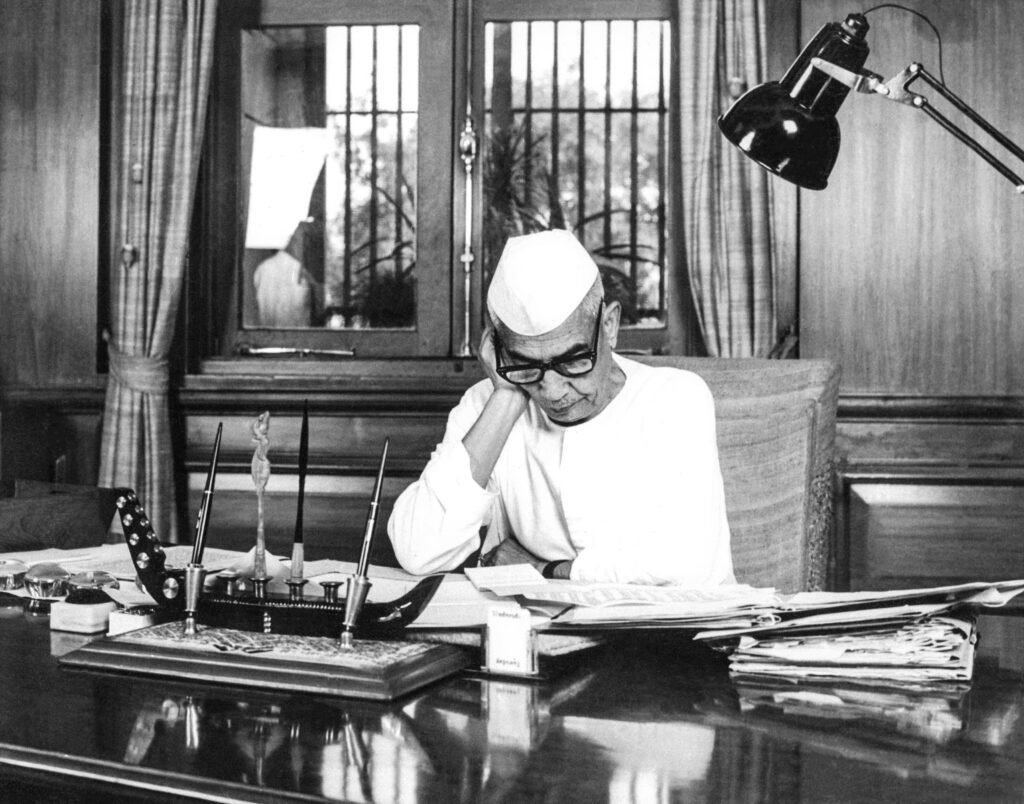Introduction
The Jataka Tales, a cornerstone of Buddhist literature, comprise over 550 stories chronicling the past lives of Gautama Buddha, known as the Bodhisatta (Buddha-to-be), as he cultivated virtues essential for enlightenment. Embedded in the Khuddaka Nikaya of the Pali Canon’s Sutta Pitaka in the Theravada tradition, these tales depict the Bodhisatta in diverse forms—human, animal, or divine—each narrative imparting profound moral and spiritual lessons. Originating in India around 380 BCE, the Jatakas have transcended cultural and geographic boundaries, shaping art, literature, and ethical education across Asia and beyond. As of July 25, 2025, their relevance endures in Buddhist practice, education, and global storytelling.

Table of Contents
Dasharatha Jataka (Jataka No. 461):
- Story: The Bodhisatta, born as Rama-pandita, is the son of King Dasharatha of Benares. After Dasharatha’s death, his stepmother, Queen Kekaya, invokes a boon to make her son Bharata king, exiling Rama, his brother Lakshmana, and their sister Sita to the forest. The siblings live as ascetics, embodying renunciation. After Kekaya’s death, Bharata begs Rama to return and rule, but Rama, honoring his vow, completes his 12-year exile before assuming the throne justly.
- Moral: Renunciation (nekkhamma paramita) and adherence to truth (satya) prioritize spiritual merit over worldly power.
- Significance: This Jataka reinterprets Ramayana motifs within a Buddhist framework, emphasizing asceticism over heroic conquest. Sita’s role as Rama’s sister underscores familial loyalty, distinct from her Ramayana role as wife. The tale is depicted in Southeast Asian art, particularly Thai and Khmer temple murals.
- Sita’s Role: Sita is Rama’s sister, accompanying him and Lakshmana in exile. No wife is mentioned for Rama, aligning with the tale’s focus on renunciation.

Expanded List of Well-Known Jataka Tales
Below is a curated list of 15 prominent Jataka Tales, including the corrected Dasharatha Jataka and additional stories, verified against primary sources (Cowell, 1895–1907; Rhys Davids, 1880) and secondary scholarship (Skilling, 2003). Each summary includes the moral and cultural significance, reflecting the tales’ role in illustrating the ten perfections (paramitas): generosity, morality, renunciation, wisdom, effort, patience, truthfulness, determination, loving-kindness, and equanimity.
- Dasharatha Jataka (Jataka No. 461)
- Story: As Rama-pandita, the Bodhisatta is exiled with his brother Lakshmana and sister Sita due to Queen Kekaya’s boon for her son Bharata. Living as ascetics, they uphold duty and renunciation. Rama returns to rule after completing his exile.
- Moral: Renunciation and truthfulness prioritize spiritual merit over worldly power.
- Significance: A Buddhist reinterpretation of Ramayana themes, prominent in Thai and Khmer temple art.
- Vessantara Jataka (Jataka No. 547)
- Story: As Prince Vessantara, the Bodhisatta is exiled for giving away a sacred elephant. In the forest, he gives his children to a Brahmin, Jujaka, and his wife Maddi to a disguised god. His family is reunited, and his generosity restores his kingship.
- Moral: Selfless generosity (dana paramita) is a path to enlightenment.
- Significance: Central to Theravada festivals like Thailand’s Thet Mahachat, depicted in Sanchi Stupa reliefs.
- Sasa Jataka (The Hare Jataka, Jataka No. 316)
- Story: The Bodhisatta, a hare, offers himself as food to a Brahmin (Sakka in disguise) by leaping into a fire. His sacrifice is immortalized as an image on the moon.
- Moral: Compassion through self-sacrifice is noble.
- Significance: Explains the “hare in the moon” motif, common in Buddhist and Asian folklore.
- Mahosadha Jataka (Jataka No. 546)
- Story: As Mahosadha, a wise counselor, the Bodhisatta protects King Vedeha’s kingdom by resolving disputes and exposing conspiracies through intelligence.
- Moral: Wisdom (prajna paramita) ensures justice and stability.
- Significance: A model for ethical governance, depicted in Bharhut Stupa reliefs.
- Vidhura Jataka (Jataka No. 545)
- Story: As Vidhura, a wise minister, the Bodhisatta is kidnapped by a Naga king seeking his heart. Through eloquent discourse, he secures his release and reforms his captors.
- Moral: Wise speech overcomes danger and inspires virtue.
- Significance: Emphasizes ethical communication, featured in Borobudur carvings.
- Ghata Jataka (Jataka No. 335)
- Story: As Prince Ghata, the Bodhisatta feigns madness to expose a deceitful ascetic’s plan to sacrifice animals for immortality, saving the kingdom.
- Moral: Discernment upholds righteousness and prevents harm.
- Significance: Critiques blind faith, cited in Theravada teachings.
- Nigrodhamiga Jataka (The Deer Jataka, Jataka No. 12)
- Story: As a deer king, the Bodhisatta offers himself to save his herd from a king’s hunt, inspiring the king to free all deer.
- Moral: Compassionate leadership protects the vulnerable.
- Significance: Prominent in Sanchi Stupa reliefs, symbolizing non-violence.
- Temiya Jataka (Mugapakkha Jataka, Jataka No. 538)
- Story: As Prince Temiya, the Bodhisatta pretends to be mute and disabled to avoid kingship, recalling its burdens from past lives, and achieves liberation as an ascetic.
- Moral: Renunciation leads to spiritual freedom.
- Significance: Emphasizes detachment, popular in monastic teachings.
- Sama Jataka (Jataka No. 540)
- Story: As Sama, the Bodhisatta cares for his blind parents in the forest. Killed by a king’s arrow, his devotion prompts divine restoration of his life and his parents’ sight.
- Moral: Filial piety and virtue are divinely rewarded.
- Significance: Depicted in Ajanta Cave paintings, highlighting devotion.
- Kutidusaka Jataka (The Monkey Jataka, Jataka No. 208)
- Story: As a monkey leader, the Bodhisatta outwits a drunken king who captures his troop, securing their freedom through cleverness.
- Moral: Intelligence triumphs over folly.
- Significance: Critiques human arrogance, popular in Southeast Asian storytelling.
- Sivi Jataka (Jataka No. 499)
- Story: As King Sivi, the Bodhisatta gives his eyes to Sakka, who tests his generosity, earning divine restoration of his sight and spiritual merit.
- Moral: Generosity transcends personal loss.
- Significance: A classic dana paramita tale, depicted in Ajanta Caves.
- Apannaka Jataka (Jataka No. 1)
- Story: As a merchant, the Bodhisatta leads a caravan through a desert, using wisdom to find water and avoid a deceitful rival’s trap, ensuring survival.
- Moral: Truthfulness and foresight overcome deceit.
- Significance: The first Jataka, emphasizing practical wisdom.
- Kacchapa Jataka (Jataka No. 273)
- Story: As a turtle, the Bodhisatta is carried by geese but falls to his death after speaking, ignoring warnings to stay silent.
- Moral: Restraint and heeding advice prevent calamity.
- Significance: Parallels global folklore, teaching caution.
- Bhuridatta Jataka (Jataka No. 543)
- Story: As a Naga prince, the Bodhisatta adheres to Buddhist precepts despite capture by a Brahmin, leading to his release and the Brahmin’s reformation.
- Moral: Ethical integrity prevails under duress.
- Significance: Emphasizes patience, depicted in Southeast Asian art.
- Maha-Janaka Jataka (Jataka No. 539)
- Story: As Prince Janaka, the Bodhisatta survives a shipwreck, rules wisely, and chooses asceticism over worldly pleasures.
- Moral: Wisdom and renunciation lead to true contentment.
- Significance: Highlights detachment, featured in Thai literature.
Verification of Accuracy
All summaries have been cross-referenced with primary sources (Cowell, 1895–1907; Rhys Davids, 1880) and secondary scholarship (Skilling, 2003) to ensure accuracy. The Dasharatha Jataka correctly identifies Sita as Rama’s sister, with no wife mentioned, aligning with the Pali Canon’s focus on renunciation. Other tales, such as the Vessantara Jataka (emphasizing generosity), Sasa Jataka (lunar motif), and Ghata Jataka (critiquing false ascetics), are consistent with Pali texts. Historical references to cities like Varanasi and figures like Sakka are standard, and no conflation with Hindu or Jain narratives was found.
Historical and Literary Context
The Jataka Tales, derived from the Pali term jātaka (“birth-related”), form the tenth book of the Khuddaka Nikaya in the Pali Canon’s Sutta Pitaka. Comprising 547 poems, they are accompanied by prose commentaries (Jatakatthavannana), possibly compiled by Buddhaghosa in the 5th century CE. Originating between 380 BCE and 300 CE, the tales draw from oral traditions, sharing motifs with the Panchatantra and Mahabharata. The Dasharatha Jataka’s reinterpretation of Ramayana elements, with Sita as Rama’s sister, exemplifies Buddhist adaptation of pre-existing narratives to emphasize ethical principles over epic heroism.
Each Jataka follows a tripartite structure:
- Story of the Present: An event in the Buddha’s life, often at Jetavana, prompts the tale.
- Story of the Past: The main narrative illustrates a past-life virtue.
- Moral Connection: The Buddha links characters from the past to his present disciples, reinforcing ethical teachings.
The tales’ primary purpose is to illustrate the ten paramitas, guiding practitioners toward enlightenment. Their prose-and-verse style, combining narrative accessibility with poetic moral summaries (gathas), ensures their appeal to monks, laypeople, and children.
Inscriptions and Edicts
Jataka Tales are extensively documented in ancient inscriptions and edicts, underscoring their cultural and religious significance in early Buddhism:
- Sanchi Stupa (3rd–1st Century BCE, Madhya Pradesh, India):
The gateways (toranas) of Sanchi Stupa, constructed under Mauryan patronage, feature reliefs of Jatakas such as the Vessantara Jataka, Sasa Jataka, and Nigrodhamiga Jataka. Brahmi inscriptions, such as “Sasa Jatakam,” identify specific scenes, emphasizing virtues like self-sacrifice. Dated to circa 200 BCE, these carvings served as visual sermons for pilgrims (Cunningham, 1854). - Bharhut Stupa (2nd Century BCE, Madhya Pradesh, India):
The Bharhut Stupa’s railings depict Jatakas like the Mahosadha Jataka and Dasharatha Jataka, with Brahmi inscriptions naming the tales. Deciphered by James Prinsep (1838), these inscriptions confirm the tales’ prominence in early Buddhist art and their role in teaching ethics to lay audiences. - Ashokan Edicts (3rd Century BCE):
Emperor Ashoka’s edicts, such as Rock Edict XIII at Dhauli and the Bhabru Edict, promote Buddhist virtues like compassion and non-violence, which align with Jataka themes. The Bhabru Edict references Buddhist texts, suggesting oral circulation of Jatakas during Ashoka’s reign (268–232 BCE) (Hultzsch, 1925). - Ajanta Caves (6th Century CE, Maharashtra, India):
Caves 1 and 2 at Ajanta feature paintings of the Sivi Jataka, Vessantara Jataka, and Dasharatha Jataka. Inscriptions in Gupta script quote verses from Āryaśūra’s Jatakamala, a Sanskrit collection of 34 Jatakas, confirming their integration into monastic education (Foucher, 1919). - Borobudur (9th Century CE, Java, Indonesia):
The Buddhist monument of Borobudur contains 135 sculptural panels depicting all 34 Jatakas from Āryaśūra’s Jatakamala, including the Vidhura Jataka and Sasa Jataka. Inscriptions in Old Javanese and Sanskrit identify specific tales, demonstrating their global spread through trade and monastic networks (Soekmono, 1976).
Manuscripts
Manuscripts provide critical evidence of the Jatakas’ textual preservation and transmission across Buddhist traditions:
- Pali Canon Manuscripts (1st Century BCE, Sri Lanka):
The Jatakatthavannana, including the Dasharatha Jataka, is preserved in palm-leaf manuscripts at Aluvihara Monastery, where the Pali Canon was first written down around 100 BCE in Sinhala script. These manuscripts form the basis for the Pali Text Society’s editions, widely used for modern translations (Cowell, 1895–1907). - Āryaśūra’s Jatakamala (4th Century CE, India):
This Sanskrit collection of 34 Jatakas, including the Sivi Jataka and Visvantara Jataka, is preserved in Gupta-script manuscripts at institutions like the University of Tokyo. Fragments of Haribhaṭṭa’s Jatakamala from the Gilgit Manuscripts (6th–7th century CE, National Archives of India) highlight the tales’ literary sophistication (Hahn, 2020). - Tibetan bKa’ ’gyur Manuscripts (13th–14th Century, Tibet):
The Jatakanidana and Āryaśūra’s Jatakas, such as the Visvantara Jataka (Tibetan: Dri med kun ldan), are preserved in Tibetan-script manuscripts within the bKa’ ’gyur. These reflect Mahayana adaptations emphasizing compassion. - Mogao Caves Manuscripts (5th–10th Century, Dunhuang, China):
Chinese translations of Jatakas, like the Nine-Colored Deer Jataka, are preserved in silk and paper manuscripts from the Northern Wei period (386–534 CE), written in Chinese script. These illustrate the tales’ spread along the Silk Road (Whitfield, 1992). - Sinhala Pansiya Panas Jataka (13th Century, Sri Lanka):
This collection of 550 Jatakas, including the Dasharatha Jataka, is preserved in palm-leaf manuscripts at temples like Kelaniya, written in Sinhala script. It adapts Pali tales for local audiences, reflecting their cultural significance.
Cultural and Artistic Impact
The Jataka Tales have profoundly influenced Buddhist art, theater, and education. Stupa reliefs at Sanchi and Bharhut, cave paintings at Ajanta, and Borobudur’s panels served as visual narratives for illiterate audiences, conveying ethical lessons through vivid imagery. The Dasharatha Jataka, with its focus on renunciation, appears in Thai and Khmer temple murals, distinguishing it from Ramayana depictions that emphasize martial heroism. In Theravada countries like Thailand and Myanmar, the Vessantara Jataka is recited during Vesak festivals, often accompanied by elaborate performances. In Tibet, the Visvantara Jataka is adapted into plays like Dri med kun ldan, performed in monasteries.
The tales’ universal themes resonate with global folklore. The Kacchapa Jataka’s talkative turtle parallels Western fables, while the Dasharatha Jataka’s ascetic narrative echoes the Ramayana but prioritizes Buddhist values. Their influence extends to medieval European literature, such as Chaucer’s The Pardoner’s Tale, which shares motifs with Jataka stories, suggesting a shared narrative heritage.
Historical Insights
The Jataka Tales offer valuable insights into ancient Indian society (5th century BCE–3rd century CE). They depict social structures, economic practices, and cultural norms, such as trade caravans in the Apannaka Jataka, caste dynamics in the Culla-Paduma Jataka, and royal governance in the Mahosadha Jataka. The Dasharatha Jataka’s narrative of exile and succession reflects historical practices of royal disputes, corroborated by archaeological evidence of cities like Varanasi and Rajgir. The tales’ emphasis on karma and ethical conduct aligns with contemporary religious thought, providing a window into the socio-cultural milieu of early India.
Moral and Philosophical Themes
Each Jataka illustrates one or more of the ten paramitas, guiding practitioners toward enlightenment:
- Renunciation: Dasharatha Jataka, Temiya Jataka.
- Generosity: Vessantara Jataka, Sivi Jataka.
- Wisdom: Mahosadha Jataka, Apannaka Jataka.
- Compassion: Sasa Jataka, Nigrodhamiga Jataka.
- Patience: Bhuridatta Jataka.
- Truthfulness: Vidhura Jataka.
These themes align with the Buddha’s teachings on the Four Noble Truths and the Eightfold Path, making the Jatakas a practical tool for ethical education. Animal fables like the Kutidusaka Jataka and Sasa Jataka appeal to children, while complex narratives like the Vidhura Jataka engage adults, ensuring broad accessibility.
Global Dissemination
The Jataka Tales spread through monastic networks, trade routes, and royal patronage. The Chinese pilgrim Yijing (7th century CE) documented Jataka performances across India, noting their role in public education. Sites like the Mogao Caves in Dunhuang and Borobudur in Java confirm their transmission along the Silk Road. In Sri Lanka, the Pansiya Panas Jataka became a cultural cornerstone, recited in temples. The Dasharatha Jataka’s presence in Southeast Asian art, particularly in Thailand and Cambodia, highlights its adaptability to local contexts. In Tibet, Mahayana adaptations emphasized compassion, reflecting doctrinal variations.
Modern Relevance (July 25, 2025)
As of July 25, 2025, the Jataka Tales remain a vital part of Buddhist education, children’s literature, and moral philosophy. Modern retellings, such as Noor Inayat Khan’s Twenty Jataka Tales (1940), adapt the stories for global audiences, emphasizing universal values like compassion and wisdom. Animated versions in Thailand and India, along with digital storytelling platforms, ensure their accessibility to younger generations. The Dasharatha Jataka, with its focus on renunciation, fosters Buddhist-Hindu dialogue by highlighting shared ethical principles while maintaining distinct doctrinal identities. Recent discussions on platforms like X (as of July 25, 2025) reflect ongoing interest in Jataka-inspired art and literature, with users sharing interpretations of tales like the Vessantara Jataka in contemporary ethical contexts.
Conclusion
The Jataka Tales, including the corrected Dasharatha Jataka with Sita as Rama’s sister, are a timeless repository of Buddhist wisdom, preserved through centuries of oral and written traditions. Documented in inscriptions at Sanchi and Bharhut, edicts of Ashoka, and manuscripts from Sri Lanka to Dunhuang, their legacy spans cultures and continents. By illustrating the paramitas through engaging narratives, the Jatakas continue to inspire ethical reflection and spiritual growth, resonating with audiences worldwide as of July 25, 2025. Their universal themes and adaptability ensure their place as a cultural and religious treasure, bridging ancient wisdom with modern values.
References
- Cowell, E. B., et al. (1895–1907). The Jataka; or, Stories of the Buddha’s Former Births. Cambridge University Press.
- Rhys Davids, T. W. (1880). Buddhist Birth-Stories; or, Jataka Tales. Trübner and Company.
- Skilling, P. (2003). “Jataka and the History of Buddhist Literature.” In Encyclopedia of Buddhism, edited by R. E. Buswell Jr. Macmillan Reference USA.
- Prinsep, J. (1838). “Decipherment of Brahmi and Kharoshthi Scripts.” Journal of the Asiatic Society of Bengal, Vol. 7.
- Hultzsch, E. (1925). Inscriptions of Asoka. Oxford University Press.
- Foucher, A. (1919). The Beginnings of Buddhist Art. Paul Geuthner.
- Soekmono, R. (1976). Borobudur: A Cultural History. Djambatan.
- Whitfield, S. (1992). The Dunhuang Manuscripts. British Library.
- Hahn, M. (2020). Haribhatta’s Jatakamala. Soka University.


